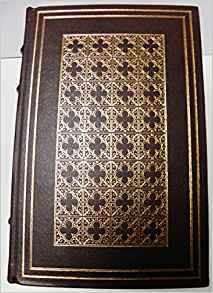John Keats
Lamia
Paperback
(CreateSpace Independent Publishing Platform Sept. 1, 2014)
, 1 edition
Lamia is a narrative poem written by English poet John Keats which was published in 1820. The poem was written in 1819, during the famously productive period that produced his 1819 odes. It was composed soon after his "La belle dame sans merci" and his odes on Melancholy, on Indolence, to a Grecian Urn and to a Nightingale and just before "Ode to Autumn".The poem tells how the god Hermes hears of a nymph who is more beautiful than all. Hermes, searching for the nymph, instead comes across Lamia, trapped in the form of a serpent. She reveals the previously invisible nymph to him and in return he restores her human form. She goes to seek a youth of Corinth, Lycius, while Hermes and his nymph depart together into the woods. The relationship between Lycius and Lamia, however, is destroyed when the sage Apollonius reveals Lamia's true identity at their wedding feast, whereupon she seemingly disappears and Lycius dies of grief.John Keats (31 October 1795 – 23 February 1821) was an English Romantic poet. He was one of the main figures of the second generation of Romantic poets, along with Lord Byron and Percy Bysshe Shelley, despite his works having been in publication for only four years before his death from tuberculosis at the age of 25. Although his poems were not generally well received by critics during his lifetime, his reputation grew after his death, and by the end of the 19th century, he had become one of the most beloved of all English poets. He had a significant influence on a diverse range of poets and writers. Jorge Luis Borges stated that his first encounter with Keats' work was the most significant literary experience of his life.[2]The poetry of Keats is characterised by sensual imagery, most notably in the series of odes. This is typical of romantic poets, as they aimed to accentuate extreme emotion through an emphasis on natural imagery. Today his poems and letters are some of the most popular and most analysed in English literature. Some of the most acclaimed works of Keats are "Ode to a Nightingale", "Sleep and Poetry", and the famous sonnet "On First Looking into Chapman's Homer"John Keats was born in Moorgate, London, on 31 October 1795 to Thomas Keats and his wife, Frances Jennings. There is little evidence of his exact birthplace. Although Keats and his family seem to have marked his birthday on 29 October, baptism records give the date as the 31st.[3][4] He was the eldest of four surviving children; his younger siblings were George (1797–1841), Thomas (1799–1818), and Frances Mary "Fanny" (1803–1889) who eventually married Spanish author Valentín Llanos Gutiérrez.[5] Another son was lost in infancy. His father first worked as a hostler[6] at the stables attached to the Swan and Hoop Inn, an establishment he later managed, and where the growing family lived for some years. Keats believed that he was born at the inn, a birthplace of humble origins, but there is no evidence to support his belief.[4] The Globe pub now occupies the site (2012), a few yards from the modern-day Moorgate station.[7] He was baptised at St Botolph-without-Bishopsgate, and sent to a local dame school as a child.His parents were unable to afford Eton or Harrow,[9][10] so in the summer of 1803, he was sent to board at John Clarke's school in Enfield, close to his grandparents' house. The small school had a liberal outlook and a progressive curriculum more modern than the larger, more prestigious schools.[11] In the family atmosphere at Clarke's, Keats developed an interest in classics and history, which would stay with him throughout his short life. The headmaster's son, Charles Cowden Clarke, also became an important mentor and friend, introducing Keats to Renaissance literature, including Tasso, Spenser, and Chapman's translations. The young Keats was described by his friend Edward Holmes as a volatile character, "always in extremes", given to indolence and fighting.
- ISBN
- 1501016091 / 9781501016097
- Pages
- 44
- Weight
- 4.2 oz.
- Dimensions
- 6.0 x 0.1 in.
Enjoy reading Lamia? You may also like these books
-

John Keats
Keats: Poems Published in 1820
Paperback (CreateSpace Independent Publishing Platform July 25, 2014) -

John Keats
Penguin Classics Poems Of John Keats
Mass Market Paperback (Penguin Classic March 1, 2011) -

John Keats
The Complete Poetical Works And Letters Of John Keats
Hardcover (Kessinger Publishing, LLC Sept. 10, 2010)






